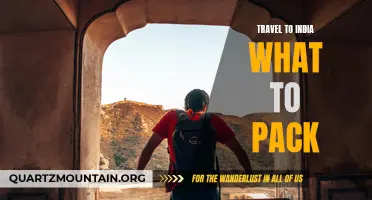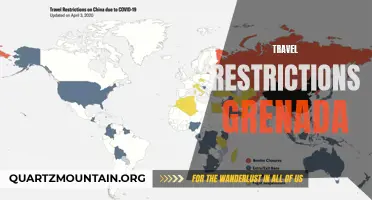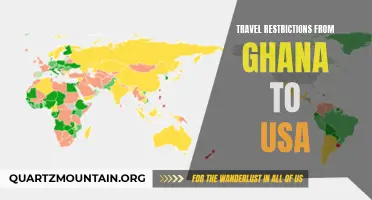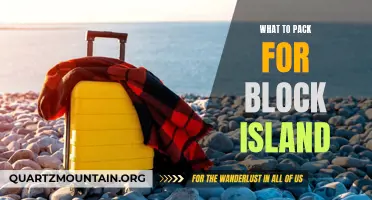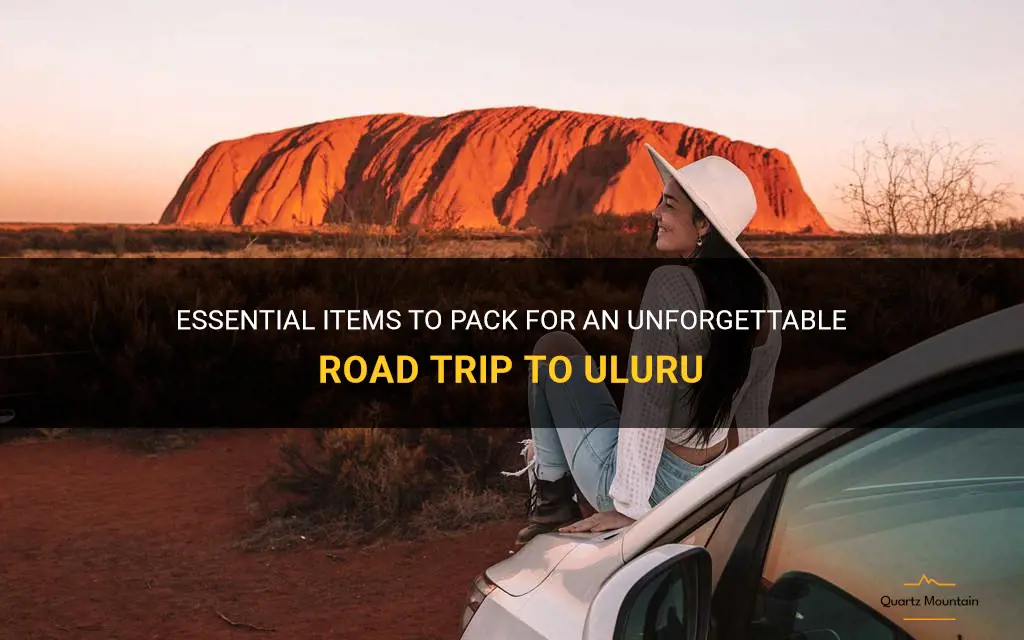
If you're planning a road trip to Uluru, also known as Ayers Rock, you're in for a once-in-a-lifetime adventure. Located in the heart of the Australian outback, Uluru is one of the country's most iconic landmarks and a must-visit destination for any traveler. But before you hit the road, it's important to pack all the essential items that will make your trip unforgettable. From camping gear to sun protection, this guide will ensure that you have everything you need to make the most of your road trip to Uluru.
What You'll Learn
- What are the essential items to pack for a road trip to Uluru?
- Are there any specific clothing items or gear that would be recommended for the trip?
- Should I bring camping equipment or is there accommodation available near Uluru?
- Are there any specific safety items or precautions I should take when packing?
- Are there any local regulations or restrictions on what can be brought into the Uluru-Kata Tjuta National Park?

What are the essential items to pack for a road trip to Uluru?
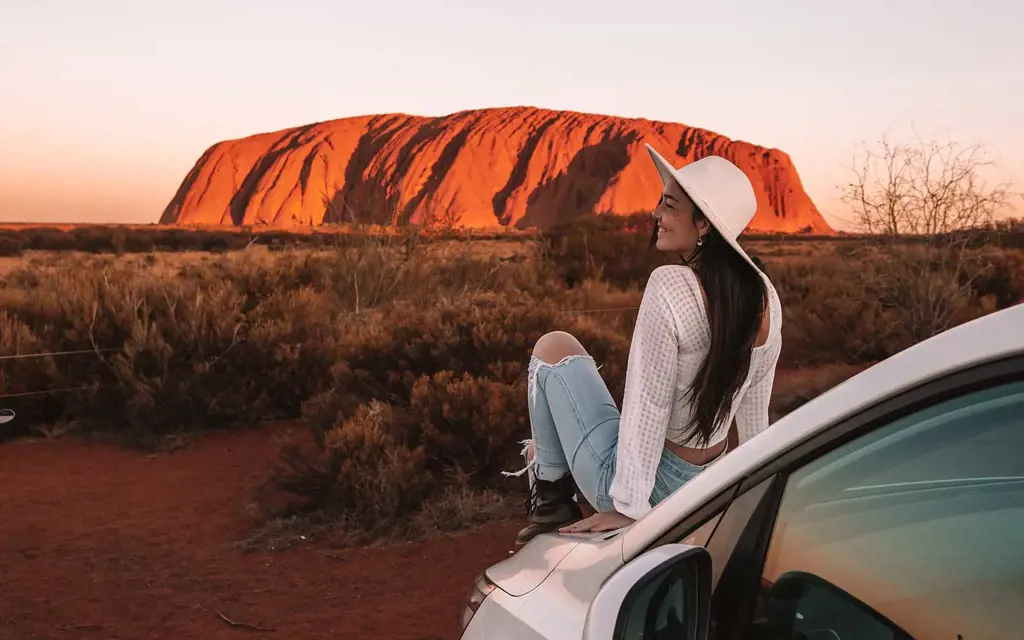
If you're planning a road trip to Uluru, also known as Ayers Rock, it's essential to pack the right items to ensure a safe and enjoyable journey. Uluru is located in the Australian Outback, which means that you'll be driving through remote areas with limited services and extreme weather conditions. Here are some essential items to pack for a road trip to Uluru:
- Water: The most important item to pack is water. Make sure to bring enough water to last the entire trip, as you may not have access to clean drinking water along the way. It's recommended to have at least one gallon of water per person per day.
- Food: Pack non-perishable snacks and meals that don't require refrigeration. Granola bars, nuts, dried fruits, and canned goods are good options. Plan your meals ahead of time and bring enough food for the duration of your trip.
- Maps and GPS: While it's always a good idea to have a physical map of the area, a GPS device or a navigation app on your phone can be invaluable when driving in unfamiliar territory. Make sure to download the necessary maps and have a backup power source for your devices.
- First aid kit: It's important to have a well-stocked first aid kit in case of any emergencies. Include bandages, antiseptic wipes, pain relievers, and any necessary prescription medications.
- Extra fuel and spare tire: The Outback is vast, and there may be long stretches without a petrol station. It's a good idea to carry extra fuel containers in case you run out. Additionally, having a spare tire, jack, and tire iron is crucial in case of a flat tire.
- Sun protection: The Australian sun can be intense, so it's vital to protect yourself from harmful UV rays. Pack hats, sunglasses, sunscreen with a high SPF, and long-sleeved clothing to shield your skin from the sun.
- Camping gear: If you plan to camp along the way, make sure to bring a tent, sleeping bags, and camping equipment. Check the weather forecast before your trip to ensure you have appropriate gear for the conditions.
- Emergency supplies: Prepare for emergencies by packing a flashlight, extra batteries, a portable phone charger, a whistle, and a pocket knife. These items can be lifesavers if you find yourself in a difficult situation.
- Extra clothing and blankets: The Outback can experience extreme temperature changes, so it's crucial to pack clothing for both hot and cold weather. Bring extra layers and blankets to stay warm during chilly nights.
- Entertainment and comforts: Road trips can be long, so it's nice to have some entertainment and comforts along the way. Pack books, music, games, and any other items that will make the journey more enjoyable.
By packing these essential items, you'll be well-prepared for a road trip to Uluru. Remember to check the weather conditions, road closures, and any travel advisories before your trip. Stay safe and have a fantastic adventure exploring the stunning Australian Outback.
The Essential Guide to Packing for Iceland in November: Everything You Need to Know
You may want to see also

Are there any specific clothing items or gear that would be recommended for the trip?
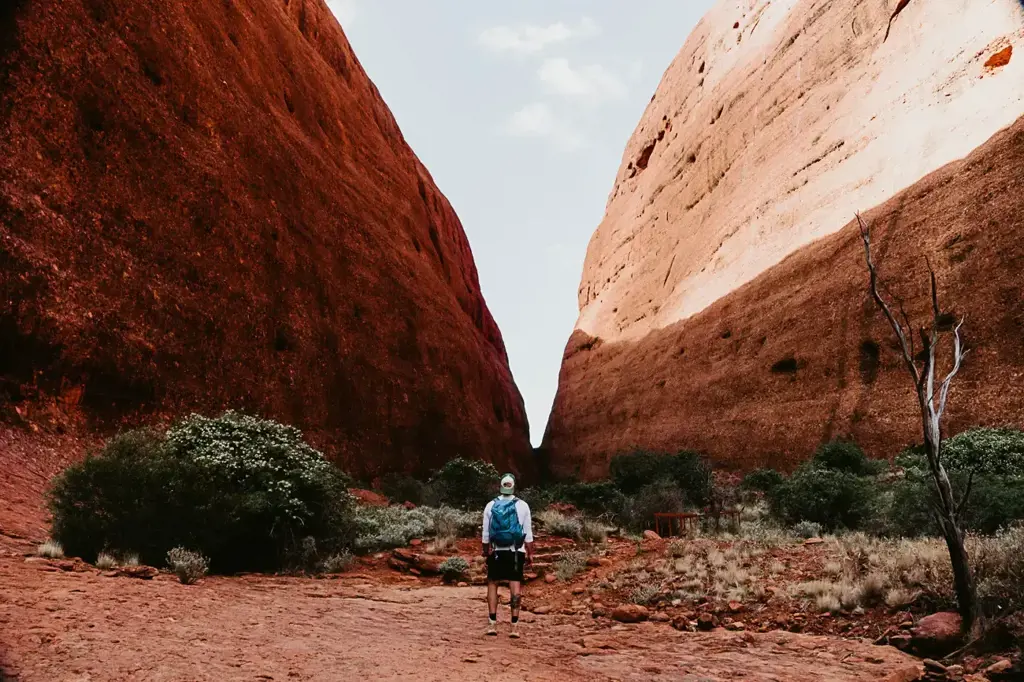
Planning a trip involves much more than just deciding on your destination and booking your accommodations. It also requires careful consideration of the clothing and gear you'll need to bring along. Depending on the nature of your trip and the activities you plan to engage in, there may be specific items that are highly recommended. In this article, we'll discuss some general recommendations for clothing and gear for different types of trips.
For outdoor adventures such as hiking or camping, it's crucial to have appropriate clothing and gear to ensure your comfort and safety. The following are some essentials to consider:
- Layered Clothing: When spending time outdoors, it's important to dress in layers. This allows you to adjust your clothing to the changing weather conditions and your activity level. Start with a base layer made of moisture-wicking material such as merino wool or synthetic fabrics. Follow it up with an insulating mid-layer such as a fleece or a down jacket. Finally, finish off with a waterproof and windproof outer layer to protect you from the elements.
- Hiking Boots: Invest in a pair of sturdy hiking boots that provide ankle support and have a good grip on various terrains. Proper footwear is essential to prevent blisters and sprained ankles while hiking.
- Backpack: Choose a backpack that is comfortable to carry and has enough space to hold all your essentials. Look for features such as padded shoulder straps, a waist belt for weight distribution, and multiple compartments for organized storage.
- Hat and Sunglasses: Protect yourself from the sun's harmful rays by wearing a wide-brimmed hat and sunglasses with UV protection. These accessories will not only shield your eyes and face but also help prevent sunburns.
For city trips or cultural excursions, the clothing and gear you need may vary. Consider the following recommendations:
- Comfortable Walking Shoes: You'll likely be doing a lot of walking in cities, so invest in a pair of comfortable and supportive shoes. Avoid heels or shoes that are too tight, as they can cause blisters and discomfort.
- Lightweight Clothing: Choose lightweight and breathable materials for your clothing to stay comfortable in hot climates or crowded areas. Loose-fitting clothes will not only keep you cool but also help you blend in with the local culture.
- Day Pack: A small day pack is handy for carrying essentials such as water, a map, a guidebook, and a portable charger. Look for a pack that is compact and has secure compartments to keep your belongings safe.
- Travel Adapter: If you're traveling internationally, don't forget to pack a universal travel adapter. This will allow you to charge your electronic devices no matter where you are.
It's important to note that the specific clothing and gear you'll need for a trip may vary depending on factors such as the destination, season, and planned activities. Research your destination and consider the weather conditions and cultural norms to ensure you're well-prepared. Additionally, always consult experienced travelers or seek advice from outdoor gear specialists, as they can offer valuable insights based on their own experiences.
In conclusion, selecting the right clothing and gear for your trip is essential for your comfort, safety, and enjoyment. Whether you're embarking on an outdoor adventure or exploring a vibrant city, make sure you have the appropriate clothing items and gear to suit your destination and activities. Take the time to plan and pack accordingly, and you'll be ready to make the most of your travel experience.
Essential Items to Include in Your International Travel Packing Checklist
You may want to see also

Should I bring camping equipment or is there accommodation available near Uluru?
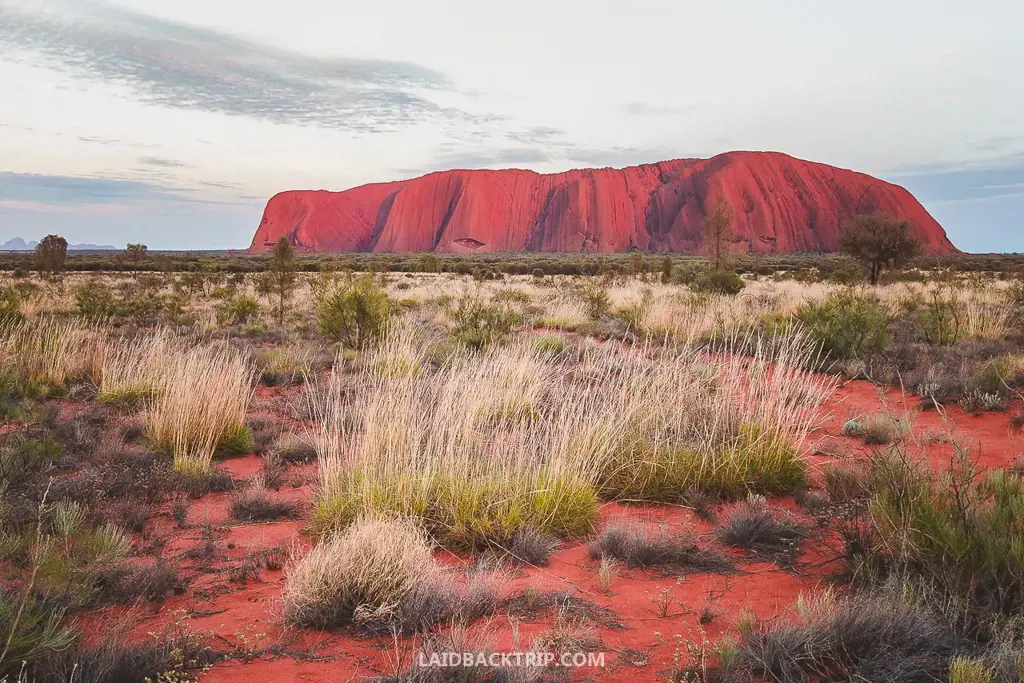
If you're planning a trip to Uluru, one of the most important things to consider is where you will be staying. Uluru is located in a remote area of Australia's Northern Territory, and there are limited accommodation options available in the immediate vicinity. The closest town to Uluru is Yulara, which is about a 15-minute drive away.
When it comes to accommodation near Uluru, there are two main options: bringing your own camping equipment or staying in one of the hotels or resorts in Yulara. Both options have their advantages and disadvantages, and the best choice for you will depend on your personal preferences and budget.
If you enjoy camping and being close to nature, bringing your own camping equipment can be a great option. There are several designated campgrounds in the area, including the Ayers Rock Resort Campground and the Curtin Springs Wayside Inn Campground. These campgrounds offer basic facilities such as toilets, showers, and BBQ areas. However, it's important to note that there are no powered sites available, so you'll need to bring your own generator if you require electricity.
Camping near Uluru can be a unique and immersive experience. You'll have the chance to sleep under the stars and wake up to breathtaking views of the rock formations. It's also a more budget-friendly option compared to staying in a hotel or resort. However, it's important to be prepared and pack all the necessary camping equipment, including a good quality tent, sleeping bags, cooking utensils, and food.
On the other hand, if you prefer a more comfortable and luxurious option, there are several hotels and resorts in Yulara to choose from. These accommodations offer a range of amenities, including swimming pools, restaurants, and guided tours to Uluru and Kata Tjuta. Some of the most popular hotels include the Sails in the Desert, Desert Gardens Hotel, and Emu Walk Apartments.
Staying in a hotel or resort can be a convenient option, especially if you're not accustomed to camping or if you prefer a higher level of comfort. You won't need to worry about setting up a tent or cooking your own meals, as these accommodations offer a range of services and dining options. However, it's important to note that staying in a hotel or resort near Uluru can be more expensive compared to camping.
In conclusion, the decision to bring camping equipment or stay in accommodation near Uluru depends on your personal preferences and budget. Camping can be a unique and budget-friendly option, allowing you to be closer to nature and experience the beauty of the area. However, if you prefer a more comfortable and convenient option, staying in a hotel or resort in Yulara can provide you with all the amenities you need. Whichever option you choose, make sure to plan ahead and book in advance, as accommodation near Uluru can fill up quickly, especially during peak seasons.
Pack Like a Pro: Essential Items to Bring When Visiting Your Long Distance Boyfriend
You may want to see also

Are there any specific safety items or precautions I should take when packing?
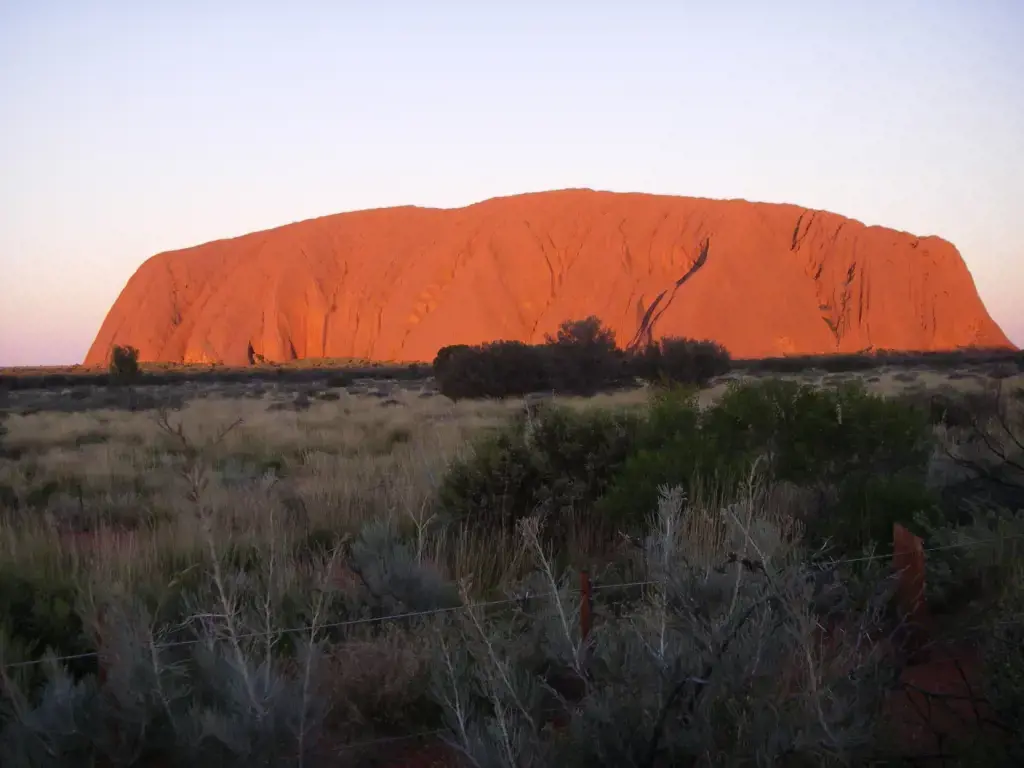
When it comes to packing for a trip, safety should always be a top priority. Whether you're heading on a short weekend getaway or a long international journey, taking specific safety items and precautions can help ensure a smooth and problem-free trip. Here are some important safety tips to consider when packing for your next adventure.
- Lock your luggage: Invest in a sturdy and reliable lock to secure your luggage. This will help deter any potential thieves from tampering with your belongings. Choose a lock that is TSA-approved, so if required, the authorities can open your luggage for inspection without damaging the lock.
- Pack a first aid kit: Accidents can happen anytime and anywhere, so it's important to have a basic first aid kit handy. Include items such as band-aids, antiseptic wipes, pain relievers, and any necessary prescription medications. Additionally, if you have any pre-existing medical conditions, make sure to pack all the necessary medications and a copy of your medical records.
- Organize important documents: Keep all your important documents together in a waterproof and easily accessible pouch. This should include your passport, identification cards, travel insurance details, emergency contact numbers, and any necessary visas. It's also a good idea to make digital copies of these documents and store them securely online, so you can access them from anywhere in case of an emergency.
- Protect your electronics: Electronics are expensive and essential for most travelers. To protect your devices from damage, invest in a padded and waterproof case. Additionally, consider bringing a surge protector or a portable charger to ensure your devices stay powered and protected.
- Bring a personal alarm or whistle: Personal safety is crucial, especially when traveling alone or in unfamiliar areas. Having a personal alarm or whistle can help attract attention and deter potential threats. Keep it easily accessible, either in your pocket or on a lanyard around your neck.
- Check the local laws and regulations: Before packing, make sure to research the local laws and regulations of your destination. Some countries have specific restrictions on items such as medications, certain types of technology, or even clothing. Knowing these regulations in advance will save you from any potential problems at customs.
- Secure your cash and credit cards: It's always a good idea to have multiple ways to access and store money while traveling. Avoid keeping all your cash and credit cards in one place. Spread them out in different pockets or compartments, and consider investing in a money belt or a hidden travel wallet to keep your valuables secure.
- Pack a travel-sized safety kit: In addition to a first aid kit, consider packing a travel-sized safety kit that includes items such as a flashlight, a whistle, a pocket knife, and a mini fire extinguisher. These items can be extremely useful in case of emergencies or unexpected situations.
Remember, safety should always be a priority when traveling. By taking these precautions and packing the necessary safety items, you can have peace of mind and enjoy your trip without unnecessary worries. Stay informed, stay prepared, and stay safe!
Essential Items for a Memorable 3-Day Bahama Cruise
You may want to see also

Are there any local regulations or restrictions on what can be brought into the Uluru-Kata Tjuta National Park?

If you're planning a visit to the Uluru-Kata Tjuta National Park, it's important to be aware of the local regulations and restrictions on what can be brought into the park. These rules are in place to protect the natural environment and ensure the safety and enjoyment of all visitors.
One of the main regulations in the Uluru-Kata Tjuta National Park relates to the collection of natural materials. It is strictly prohibited to remove or disturb any rocks, plants, animals, or other natural features from the park. This includes things like taking souvenirs or mementos made from rocks, shells, or other materials found in the park. These restrictions are in place to preserve the integrity of the natural environment and ensure that future visitors can enjoy the park in its pristine state.
Another important regulation is the prohibition on bringing pets into the Uluru-Kata Tjuta National Park. This rule is intended to protect the native wildlife and prevent the spread of diseases to local populations. Visitors are not allowed to bring dogs, cats, or any other pets into the park. If you are traveling with a pet, it is important to make alternative arrangements for their care while you visit the park.
In addition to these restrictions, there are also regulations on the use of vehicles and camping within the park. Visitors are only allowed to drive on designated roads and tracks and must adhere to the speed limits and other road rules. Camping is permitted in designated camping areas, but it is important to obtain the necessary permits and follow the guidelines set out by the park management.
It is also worth noting that the Uluru-Kata Tjuta National Park is located within the Anangu Pitjantjatjara Yankunytjatjara (APY) Lands, which are an Indigenous-owned area. As such, it is important to respect the cultural practices and traditions of the local Indigenous people. Visitors should be mindful of any specific protocols or restrictions that may apply when visiting areas of cultural significance within the park.
In conclusion, there are several regulations and restrictions in place at the Uluru-Kata Tjuta National Park to protect the environment and ensure the safety of visitors. These include restrictions on collecting natural materials, prohibition on bringing pets into the park, regulations on vehicle use and camping, and respect for Indigenous cultural practices. By being aware of and adhering to these regulations, visitors can help preserve the natural beauty of the park for future generations.
Essential Items to Pack for a Memorable Bachelorette Weekend
You may want to see also
Frequently asked questions
When packing for a road trip to Uluru, it is important to pack clothes that are suitable for the desert climate. Be sure to bring light and breathable clothing such as shorts, t-shirts, and dresses for the warm daytime temperatures. It is also advisable to pack long pants and long-sleeved shirts for the cooler evenings. Don't forget to bring a hat, sunscreen, and sunglasses to protect yourself from the strong Australian sun.
Given the rocky, sandy, and uneven terrain of the desert, it is recommended to bring sturdy and comfortable footwear. Closed-toe shoes such as sneakers or hiking boots are ideal for exploring the area and climbing Uluru. It is important to have footwear with good traction to prevent slips and falls.
There are a few essential items you should pack for a road trip to Uluru. These include a first aid kit, insect repellent, a flashlight, a map or GPS device, a portable phone charger, plenty of water, and snacks for the journey. It is also important to have a spare tire and necessary tools in case of a flat tire or mechanical issues.
If you plan on camping during your road trip to Uluru, it is essential to pack the necessary camping equipment. This includes a tent, sleeping bags, camping chairs, cooking utensils, a portable stove or grill, and a cooler for food and drinks. It is advisable to check if the campsites around Uluru provide any amenities such as showers or toilets to determine if you need to bring additional items.
In addition to the basic essentials, there are a few other items you should consider packing for a road trip to Uluru. These include a camera to capture the stunning landscapes, binoculars for wildlife spotting, a hat and scarf for additional sun protection, and a swimsuit if you plan on visiting any nearby swimming holes or water attractions. It is also a good idea to bring a reusable water bottle to minimize waste and stay hydrated throughout your trip.


